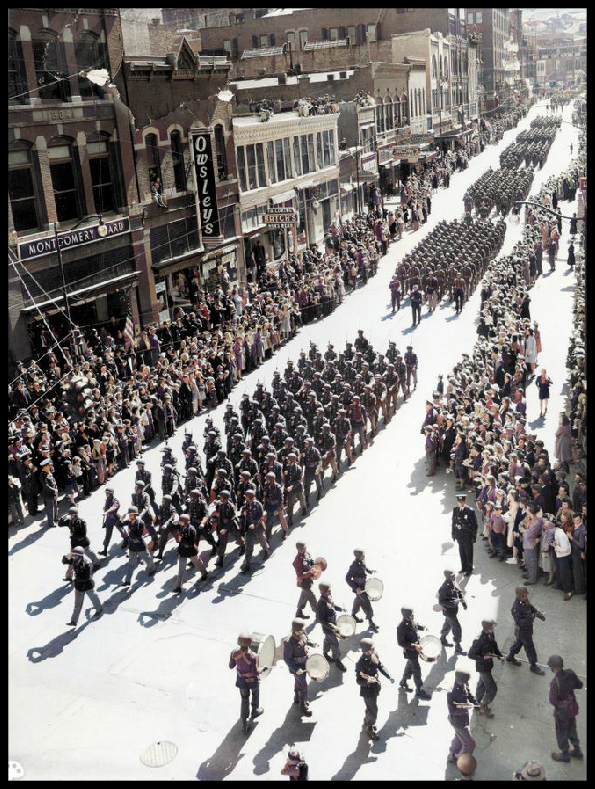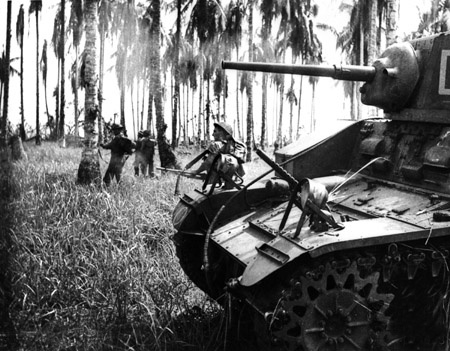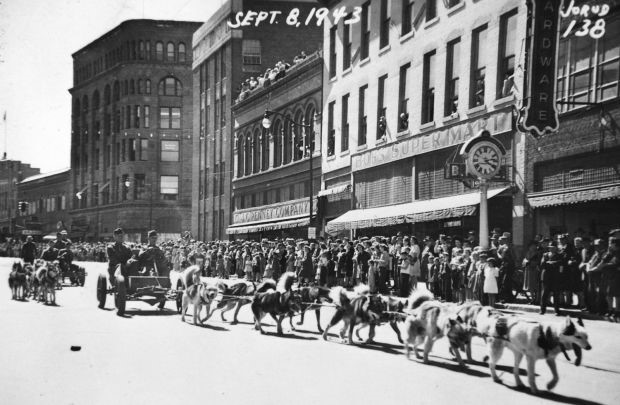BILL WOON
First Special Service Force Association
Apr 6, 2023
It was 80 years ago Thursday the 1st Special Service Force paraded down Last Chance Gulch as a farewell to Helena as they left for the East Coast for more training and eventual deployment to the Pacific and then Mediterranean Theaters of World War II.
The force was a unique joint Canadian-American top-secret unit under Lt. Col. Robert T. Frederick on July 9, 1942, at Fort William Henry Harrison west of Helena and later became known as the “Black Devils” by the Germans.
It was airborne-trained and highly skilled in mountain operations and amphibious assaults with tough, physical training concentrated on weapons proficiency and demolitions. When tested by the U.S. Army prior to deployment, the FSSF scored the highest in infantry proficiency of any unit in the Army.
The 1st Special Service Force saw most of its action in Italy where they were instrumental in breaking the German Winter Line, which was a series of mountains and ridges heavily defended by the German Army and had stymied the Allied advance to liberate Rome.
The Force then played a key role at Anzio where they held a division-sized sector along the Mussolini Canal. Aggressive patrolling and raids by the blackened faced Forceman earned them the nickname “Black Devils” by the Germans.
Members of the 1st Special Service Force were the first Allied troops to enter Rome on June 4, 1944.
Their final campaign was the liberation of Southern France. The Force seized two islands off the coast of Southern France to open the way for the Allied landing force, and then fought northeast along the coast through the towns of Grasse, Plascassiere and Menton where the unit was deactivated on Dec. 5, 1944.
In 251 days of combat the Force suffered 2,314 casualties – 134% of its combat strength. They captured 30,000 German prisoners, won five U.S. campaign stars and eight Canadian battle honors.
They never failed a mission.
Jim Cottrill of Helena was 4 years old at the time and remembers that parade of April 6, 1943, well.
“There were a helluva lot of people and I think the whole town turned out,” he said. Cottrill was with his mother and he said they walked down the hill to the parade and stood at Sixth Avenue and Last Chance Gulch, where a Montgomery Ward store used to be.
“They were impressive,” he said of the soldiers. “They came down that street and they marched. You could tell they were well-trained and ready to go.”
He said they were loved by the community as a lot of Helena residents had them over for Sunday dinners and holidays. Cottrill said many of the soldiers came back to Helena after the war and returned to their sweethearts and wives.
He said those who returned never talked much about their adventures.
Cottrill said one was Roy Hudson, who started a furniture store. He had been shot in the leg trying to rescue a buddy.
“I asked him if he was scared, he said, ‘Nah, those Germans couldn’t shoot worth sh*t,’” Cottrill said.
The surviving veterans of the FSSF dedicated a monument to their fallen brothers in August 1947 in Helena’s Memorial Park. The Cenotaph east of the monument includes the names of 488 men who made the ultimate sacrifice in World War II.
Most gratifying to the veterans of the FSSF is that its traditions and honors have not died but are carried forward, with its lineage embracing the outstanding active Special Forces units of two great democracies: The Canadian Special Operations Regiment and the United States Army Rangers and Special Forces.
On Feb. 3, 2015, Congress presented the Congressional Gold Medal to the 1st Special Service Force, “In recognition of its superior service during World War II.”
There were 43 original FSSF veterans attending the ceremony at the U.S. Capitol, along with over 800 family members, friends and members of Congress.
On Aug. 21, 2015, those veterans presented their Congressional Gold Medal to Fort William Henry Harrison, where the force trained 73 years earlier.
Cottrill does not know if Helena has ever had a bigger day than that parade 80 years ago.
“It was just amazing, the people all turned out,” he said. “They clapped and yelled.”
“The people of Helena really went all out for them,” Cottrill said. “They were proud to be what they were and the people just loved them.”
Independent Record Staff Writer Phil Drake contributed to this story. Bill Woon is with the First Special Service Force Association. Raymond Read is with the Montana Military Museum. For more information, contact Woon at 406-461-7485, or Ray Read of the Montana Military Museum, where there is a large collection dedicated to the Black Devils, 406-235-0290.




